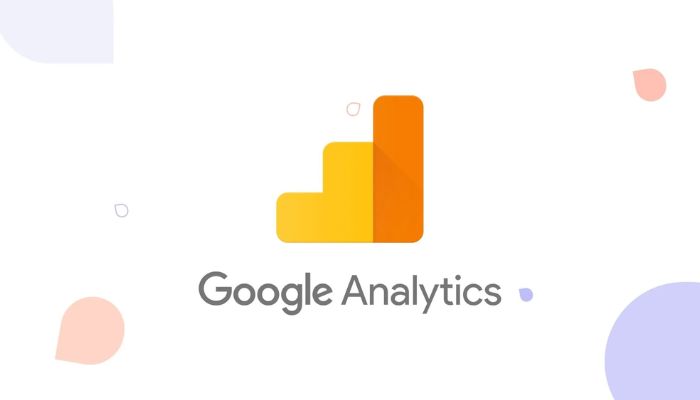As an analytics expert with more than seven years of experience, people who are just starting out with Google Analytics often ask me what the most important things are that they should be paying attention to. Read below about “Core Topics in Google Analytics for Beginners: What to Track in 2024”.
Data and insights will be more important for businesses in 2024, so it will be very important to know how to use Google Analytics well. This post will talk about the most important things that beginners should know and give examples from my own life.
Table of Contents
Understanding Your Website Traffic
First, you need to keep an eye on your website traffic. Where is it coming from, and how do people find it? This will help you understand how people find your brand.
To sort users into groups, I suggest setting up traffic source dimensions in Google Analytics. These are the main sources:
- Direct – someone types your URL directly into the browser
- Organic Search – visitors from search engines like Google
- Referral – clicks from other websites
- Social Media – visitors from social media sites
You can see things like the number of users, sessions, bounce rates, and more for each source. In my own experience, I saw that 70% of a client’s traffic came from social media. This showed that their audience is very active on social media.
Monitoring Site Content Performance
It’s important to know which pages and content on your site people like. I always tell people who are just starting out to use Google Analytics to set up content tracking.
Here are some important reports I use:
Pages Report: shows the most popular landing and exit pages, which helps you find problems. We made the website’s navigation better because the blog was the main page that people left quickly.
Site Content Report: Page views and unique pages are shown in the Site Content Report, which helps you decide which content to optimize first. For a client, I sorted pages by how often they were seen so they could update their most-used resources.
Events Report: Keeps track of what users do, like when they play videos, download files, click on links, etc. For a software company, demo buttons didn’t get many clicks, so we had to redesign them.
You can improve and make resources that are more interesting to users with content insights.
Analyzing Site Search Data
Site search analysis is often missed by beginners, but it’s a goldmine of information about what people are looking for. The search terms used, the results clicked on, the changes made, and more can all be tracked.
Here are some important reports I use:
Search Terms for the Site: Look at the most common keywords that people use to help rank pages and content. We saw a lot of searches for “black dress” on an e-commerce site, so we made a new category page.
Site Search Categories: This feature lets you know if people are looking for products, help, contact details, or something else. For a support site, we put more self-help content at the top of the list because people asked for it.
Site Search Results: Check out the click-through rates for the results in the site search results to rise in the rankings. We changed the order of the results for a magazine site because the ones at the top had low CTRs.
Getting site search to work better increases conversions and makes the whole user experience better.
Setting Up Goals and Conversions
Beginners need to keep an eye on their goals and conversions in Google Analytics in order to show ROI. This shows how activities on the site affect how the business does.
These can be goals:
- Sending in a contact form
- Buying things online
- Get it here
- Sign up for email lists
New users are shown how to set goals and given tips like
- Set a goal value for each one, like “10 daily contact form submissions.”
- Assign goal funnels to see drop-off rates. For an e-commerce client, we found that product pages had high exit rates.
- To keep track of conversions, link goals to AdWords campaigns.
With goals, you can measure how visitors behave, find problems, and improve outcomes that are important to you.
Segmenting Users and Traffic
Overall metrics are helpful, but custom segmentation gives you more in-depth data. You can separate traffic to find out things like
- How do people who use phones and computers act?
- What is it like to be a new visitor?
- What kinds of content do email subscribers like?
I tell people who are just starting out to start with segments like device type, geography, user type, and behavior. You can save segments and look at them next to each other to find trends.
We saw that mobile bounce rates were 15% higher for one client, which meant there were problems. Another thing is that paid traffic didn’t convert as well, so we stopped the campaign. Segmentation makes things clearer.
Custom Reporting and Dashboards
As a beginner, it can be hard to figure out how to combine data from all of Google Analytics’s reports. That’s why I stress making reports and dashboards that are unique to each user.
Some of the best things I do are
- The most important KPIs, goals, and metrics for the business should be at the center of your reports. Get rid of the mess.
- Data at a high level can be seen quickly with dashboards. Add summaries, graphs, key metrics, and color coding to make analysis go quickly.
- Plan to send reports to stakeholders by email. I send the CEO of a client a report every week that lists wins and areas that need more work.
With custom reporting, even people who have never used data before can tell powerful stories with it and make smart decisions.
Conclusion
I’ve been an analytics professional for seven years, and these topics have changed the way new users work with data. Focusing on traffic sources, content performance, site search, goals, segmentation, and reporting makes analysis useful. If you have the right information, you can increase ROI and give your company a lot of value.
As we move into 2024, I can’t wait to help more new users find the power of Google Analytics. With some basic knowledge and the right tracking in place, data gives you a lot of chances to grow.
Don’t be afraid to reach out if you’re just starting out! I’d be happy to help you, share resources, or give you training in analytics that fits your needs. Now is the time to get better at Google Analytics and learn how to make decisions based on data.

Shivam Mishra is the lead writer at webcourses.in, where he shares his expertise in web development, particularly in the MERN stack (MongoDB, Express.js, React, Node.js). With a solid foundation in Java and Data Structures & Algorithms (DSA), Shivam creates content that resonates with developers and tech enthusiasts alike. As a former Web Development Club Captain, he has led projects like an Air-BNB replica and a YouTube clone. Recognized as a two-time CODE-Hunt winner and LinkedIn Top Voice in Web Development, Shivam brings a wealth of knowledge to every article.
Connect with Shivam on LinkedIn.

